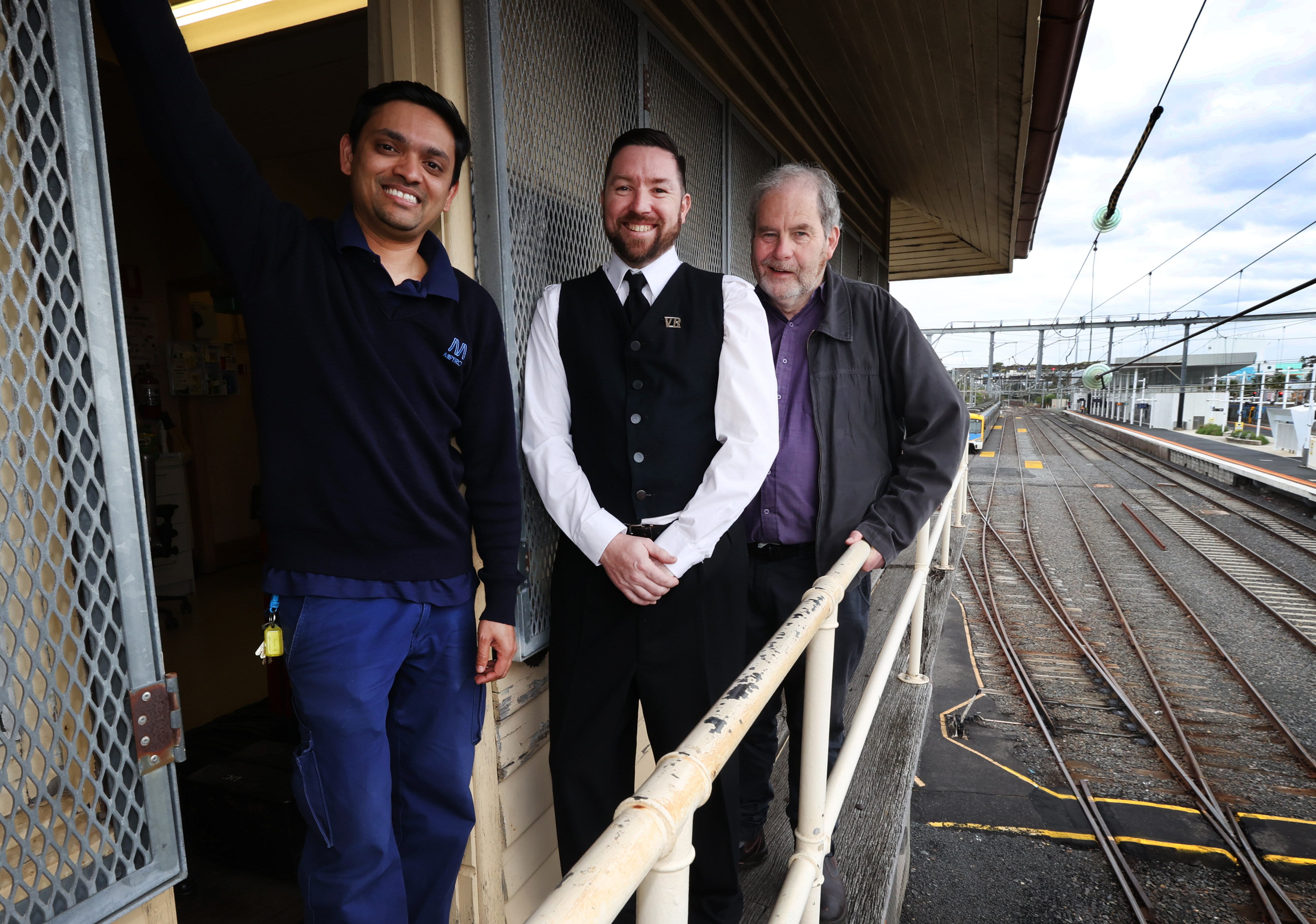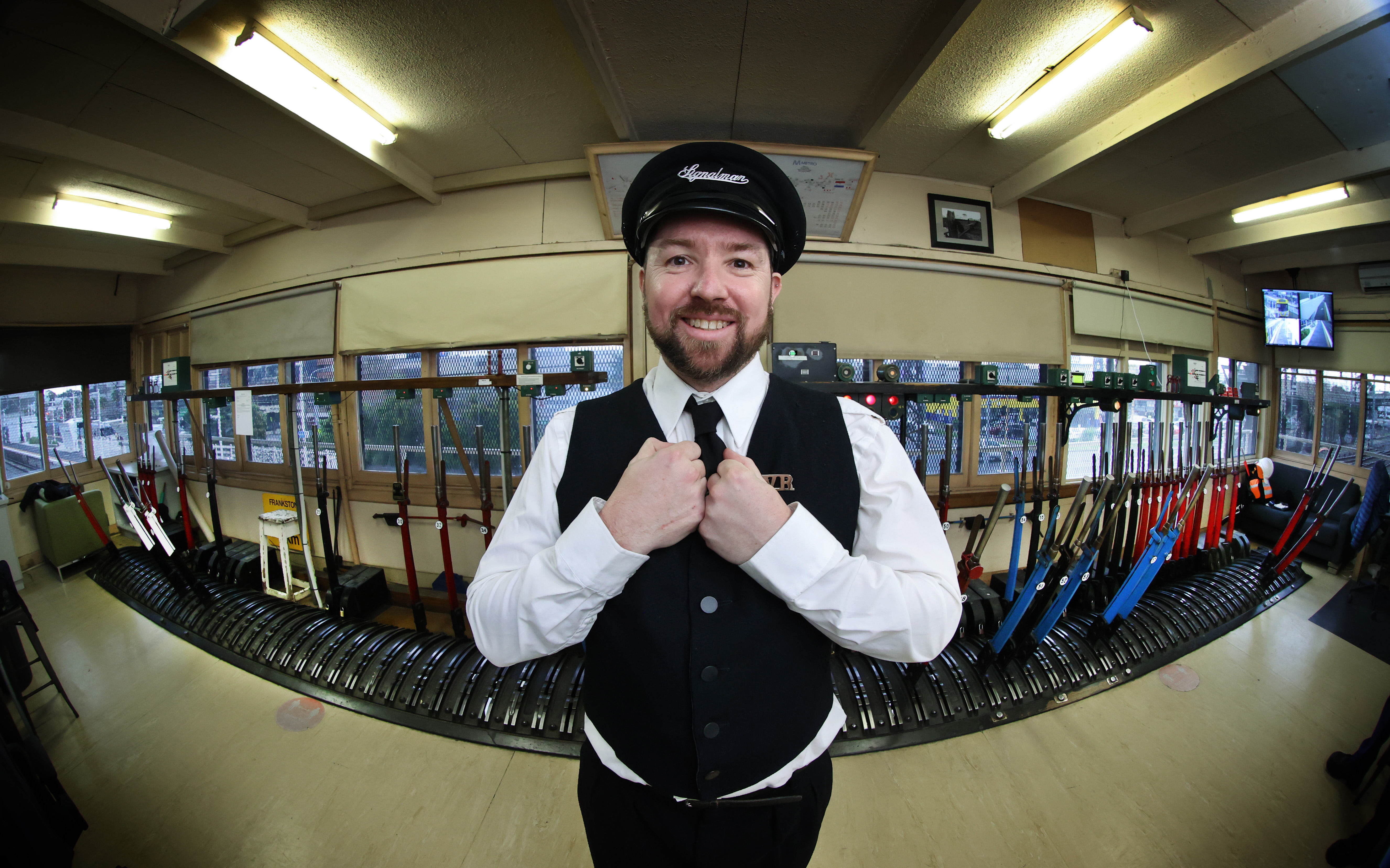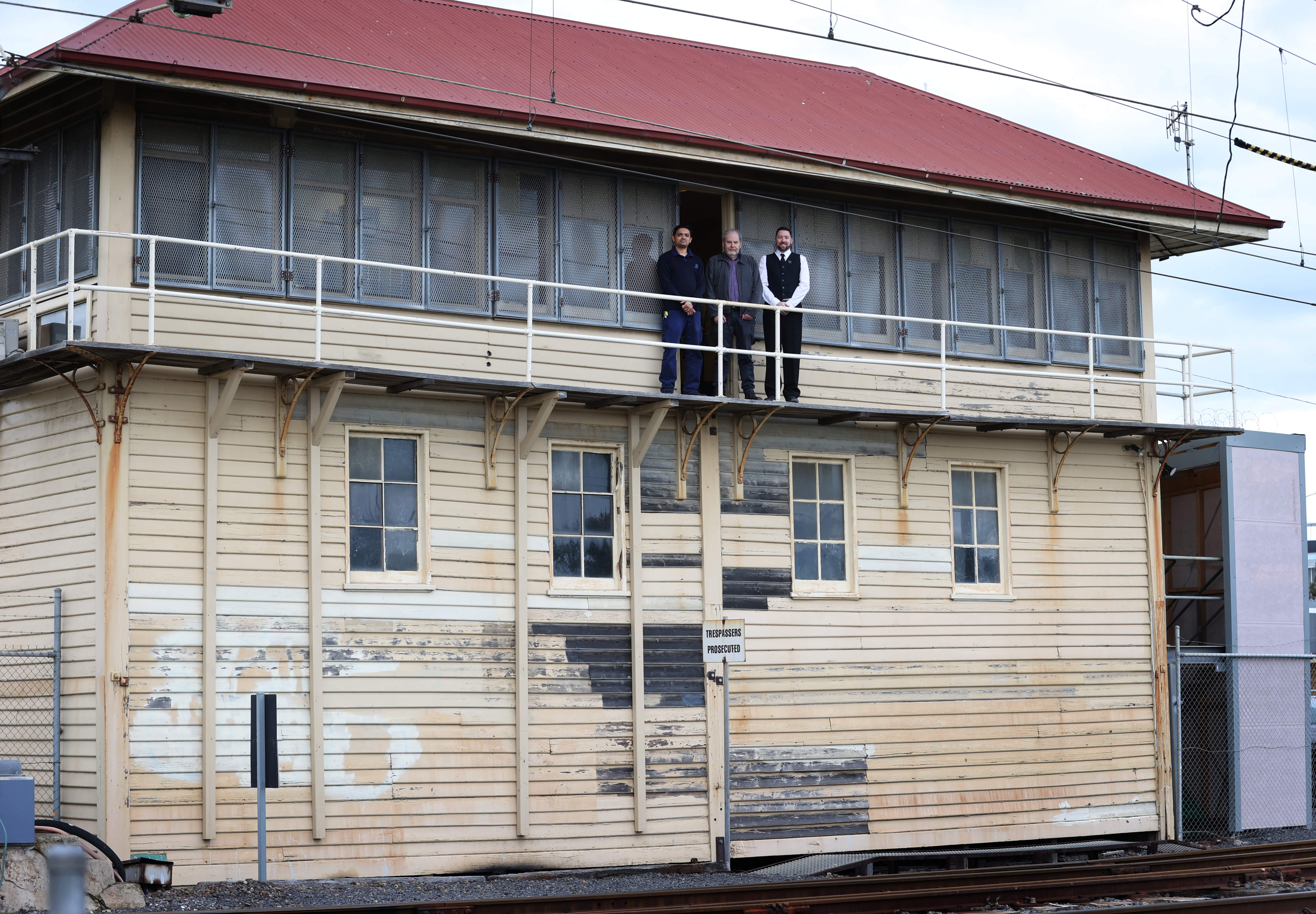The Frankston signal box turns 100
The Frankston signal box turns 100
In Melbourne’s south-east, a small piece of history sits quietly next to Frankston Station.
Having been commissioned in August 1922, the Frankston signal box is celebrating its 100th year in operation.
In 1922, a dozen eggs cost 35 cents, actress Betty White was born, and Billy Hughes was the Australian Prime Minister. It was also the year electric trains first arrived in Melbourne.
A century later, the Frankston signal box is only one of five “lever frame” control systems still in operation on the metropolitan rail network. The others are located at Sandringham, Riversdale, Elsternwick and Kooyong, with Frankston the most complex with 49 levers.
Metro Trains’ CEO Raymond O’Flaherty says, “Signalling is one of the most important parts of the train network as it informs drivers about what is ahead of them to keep passengers and others safe.
“The Frankston signal box plays a critical part in our network operations and continues to stand the test of time as we bring our network into the future.”
Signalling is one of the most important parts of the train network as it informs drivers about what is ahead of them to keep passengers and others safe.


Signallers help to ‘steer’ trains, and control where they go.
The “lever frame” signalling system dates back to the 1800’s and involves signal operators manually pulling metal levers to control train movements.
Every day signallers work on-shift to pull the levers at the Frankston signal box from the first to last service each day. The Frankston signal box requires approximately 1,500 lever changes each day.
The box currently operates the signals between Frankston and Stony Point stations, however previously, the signal box controlled other parts of the line.
The state-of-the-art Kananook Signal Control Centre at Seaford was built by the Level Crossing Removal Project, opening in September 2021. It now operates most of the 43-kilometre Frankston Line.
